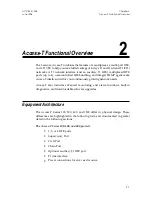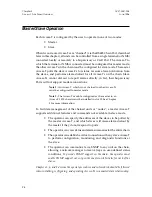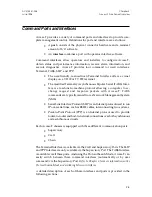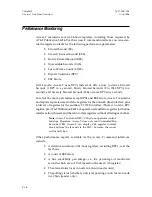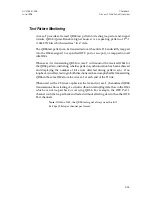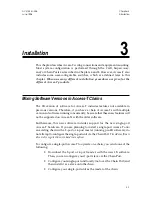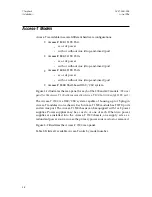
DS0 Bundling
DS0s from the DTE can be “bundled” as desired. In other words, each 56 or
64 kbps time slot from a DTE can be assigned to any DS0 from 1 to 24 on the
network. For example, if DTE 1 is configured for 224 kbps (4 x 56), any four
DS0s on the network can be assigned to DTE 1. This allows you to bundle
DTE data in consecutive or alternate DS0s, or in any other pattern, as required
for a particular FT1 service or application. A standard idle code (All ONES)
will be transmitted in unused DS0s. An example of DS0 bundling is illus-
trated in Figure 2-5.
Note:
A signal pattern of 175
±
75 consecutive ZEROS causes
Loss of Signal declaration. If a DTE port rate is set to Nx64 kbps
and AMI line coding is used, consecutive DS0s should not be
mapped to that DTE port. This precaution reduces the possi-
bility of excessive ZERO transmissions.
A DS0 bundling arrangement is called a “map”. Access-T allows you to create
two different DS0 maps. Switching between the two maps is performed on
command or automatically.
In point-to-point applications, the currently-active map can be transmitted via
the ESF data link to the far-end Access-T. This allows the near-end Access-T to
control the DS0 map at the far-end Access-T. Thus, rebundling does not require
a modem connection or visit to the far-end Access-T.
Figure 2-5. DS0 Bundling
1 2 3 4 5 6 7 8 9 10 11 12 13 14 15 16 17 18 19 20 21 22 23 24
8 DS0s
from Auxiliary T1 DTE Port
(Drop-and-Insert)
4 DS0s
from DTE Port 2
4 DS0s
from DTE Port 1
Contiguous DS0s
Alternate DS0s
= idle code
i
T1 Line: 24 DS0s
i
i
i
i
i
i
i
i
ACST-0351-005
Chapter 2
June 1996
Access-T Functional Overview
2-15

